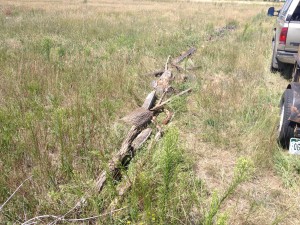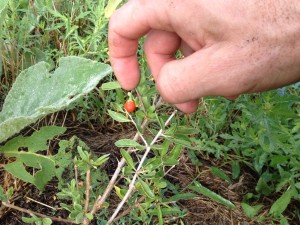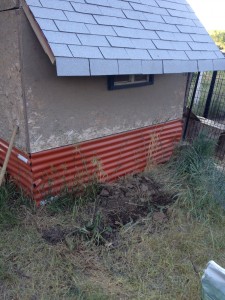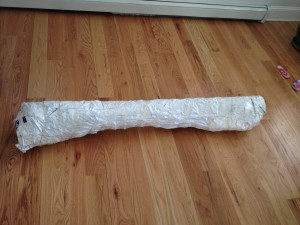Just a few days ago I thought I should order some plantain. Probably because of the mosquitos that like me. When I saw photos of it I went out side because I swore I saw some growing.
Looks like I have some at the new homestead. Anyone think this is not Narrow Leaf Plantain?
The long leaf with lines running down it
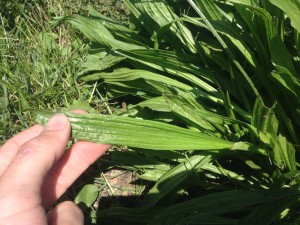
The flower (made me rather certain that it is plantain)
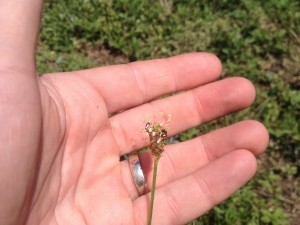
The long leaf plantain plant.
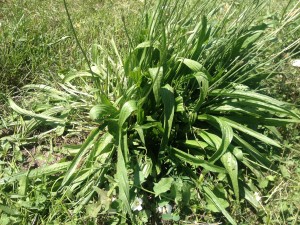
Other updates –
Hazel Nut Bushes
I noticed how dry the soil was around the hazel nuts that were planted this year so I added them to the drip irrigation of the 2013 food forest. Since I premade the 1/4 inch micro tubing pieces with dripper and connector the process for 20 plus bushes went rather quickly. Both at the farm and the home stead I’ve been surprised by seeing plants that are totally leafed out drop all their leaves. I then think they are dead only to find a new shoot coming up most of the time. The “champion” plant at the home stead was about 18 inches tall and died back to the ground and has a new stem coming up now.
Bees
The bee hive now has a ‘honey super’ on it. I was told that once the bees fill in a second box that I could put a honey super on the hive for a while. The honey super is for honey for us. To get only honey on these smaller frames I put a queen excluder in between the top box and the super. I think I’m supposed to remove it by the end of the month to make sure the bees have plenty of honey for the winter. I’m tempted to buy some hives with bees for the farm. Originally I didn’t think there would be enough flowers out here for them but now that I see all the flowers I realize they would do great out here. So at some level I see the farm producing honey. Oh seeing pallets of bees in an empty field the other day gave me even more confidence in having bees at the farm.
Condensation
I was a bit surprised to see so much condensation at the home stead a few mornings in a row. As I learned in the Permaculture PDC, condensation can add a significant amount to total condensation for an area. These berry leaves has the water droplets around the edges.
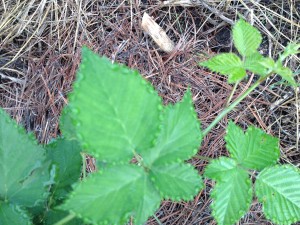
Sun Flowers
The sun flowers are in full bloom. Bumblebees, small bees and some other kind of bugs are enjoying them.



Other Flowers
Other flower seeds were also thrown on the swales along with some vegetables.

Goji berries at RegenFarms. Mature but small goji bare root plants were planted this spring and this one is already producing fruit. Probably 10 so far.

Vegetable on the food forest swale, we seeded the swale with some vegetables as well as clovers, wild flowers and sunflowers.
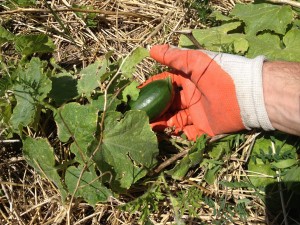
And I now know what a split head of cabbage looks like.

I found some more wood for the other half of the 2014 swale that is above the 2nd food forest. Hopefully I can get about twice this much before covering it up as it becomes part of the swale.
